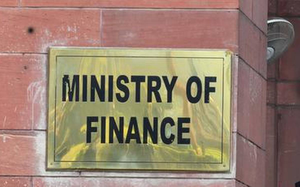Credit on UPI stuck due to fee structure, low adoption

Alack of clarity on the interchange fee structure, and lower adoption among smaller merchants has weighed on credit through unified payments interface volumes (UPI), say experts.
While National Payments Corporation of India (NPCI) has not officially disclosed volumes for credit on UPI, industry experts acknowledge that the volumes have been negligible so far. “Since credit has associated cost, it is not free and a fee is levied on the merchants in the form of merchant discount rate (MDR) for each transaction,” says Rohan Lakhaiyar, Partner, Grant Thornton Bharat.
He added that since merchants are used to free UPI payments through bank account, the adoption on demand side of the payment flow is limited. Due to low demand, only a few lenders have enabled and promoted credit on UPI on the supply side, which further limits its adoption across the ecosystem.
In September, the Reserve Bank of India (RBI) enabled the UPI network to facilitate payments financed by banks. The move is intended to reduce the cost of such offerings and help in development of unique products for Indian markets. Under this facility, payments through a pre-sanctioned credit line issued by a bank to individuals, with prior consent of the individual customer, are enabled for transactions using the UPI System.
Banks may, as per their board approved policy, stipulate terms and conditions of use of such credit lines. The terms may include credit limit, period of credit, and rate of interest. “Credit lines can sometimes be cheaper than taking loans. It gives flexibility to companies to only use what they need to make payments to vendors, fill cash flow gaps, etc as opposed to taking out a larger loan,” Sunil Rongala, Senior Vice President, Head – Strategy, Innovation and Analytics, Worldline India.
Currently, Axis Bank, HDFC Bank, ICICI Bank, Punjab National Bank, and State Bank of India offer UPI on credit. The facility is also live on BHIM, Google Pay, Paytm, and Payzapp.
“No interchange is defined for credit on UPI, unlike credit card on UPI. Also, large banks might fear cannibalisation of their credit card balances, given credit on UPI is very similar to credit cards,” says Ranadurjay Talukdar, Partner and Payments Sector Leader, EY India.
“Seamlessly integrating multiple tech systems to provide loan accounts with a UPI handle requires a sophisticated technology stack, something not all banks have,” he added. Currently, merchants are not charged for accepting UPI payments, which are typically small-ticket transactions. This has contributed to the steady rise in UPI transactions. On the other hand, acquiring banks levy a fee on merchants that accept debt card, credit card, funds via net banking, and digital wallets. Currently, merchant discount rate (MDR) charges are at around 2-3% of the transaction amount. The MDR includes the interchange fee, which is paid by the merchant’s bank to the customer’s bank.
Here, the ambiguity around merchant discount rate makes mid-sized and smaller banks banks disncentivised to invest in credit on UPI, say experts.
In the absence of official data, some experts are looking at business-to-business UPI transactions as an approximate proxy for transactions done on credit lines. In February, B2B transactions accounted for a mere 0.064% of total UPI transactions. It accounted for a mere 0.585% of transaction value.
“Currently, only banks can offer UPI rails. Startups, which are most likely to use lines of credit struggle to get bank funding for a variety of reasons,” Rongala said, adding that these entities will only be offered a secured line of credit when most start-ups will generally struggle to provide collateral.
Can NBFCs and Fintechs make a difference?
Non-banking financial companies and fintechs have through various representative bodies, approached the RBI to allow such entities to offer credit on UPI, say industry sources. While discussions are ongoing, Fibe, Vivifi India Finance, and Freo are among the many entities that are looking to capitalise on the credit on UPI opportunity.
“I think NBFCs will also be allowed in the category. Give it a couple of quarters, I think it will come into play,” says Akshay Mehrotra, Cofounder and Chief Executive Officer, Fibe.
Making UPI payments? Remember these important things first
With their ability to cater to the under-banked customer segment, enabling NBFCs and fintechs to offer credit on UPI will help increase transaction volumes, say experts. To begin with, these entities must attain a third party application provider (TPAP) license from NPCI. However, experts feel that regulatory concerns over the sharp rise in unsecured consumer loans may work against non-bank lenders.
“There is no doubt that volumes will rise If you open up the product to a wider range of players. The concern is whether you are giving loans to the right individual and doing KYC in the appropriate manner,” Talukdar said.





